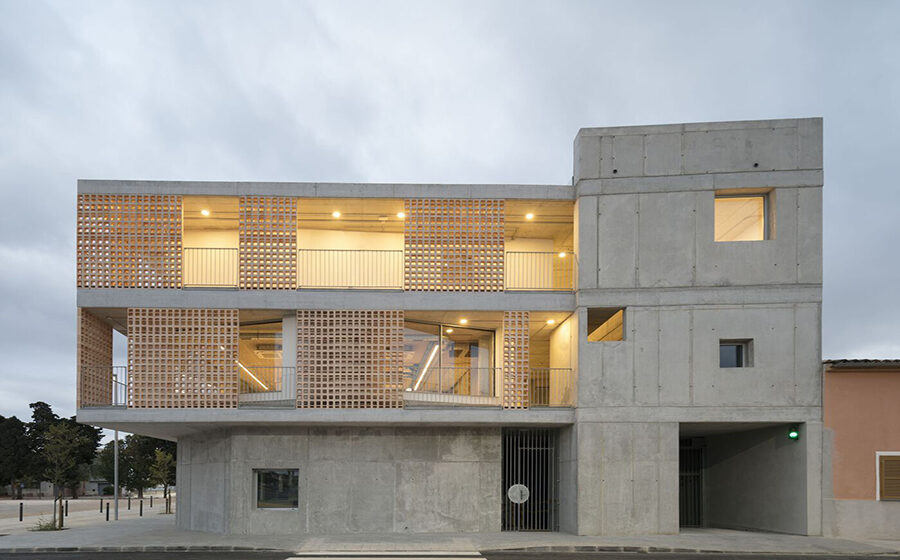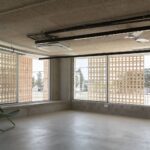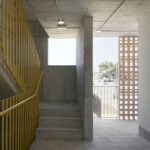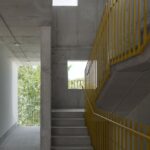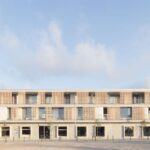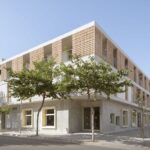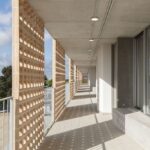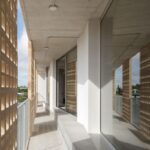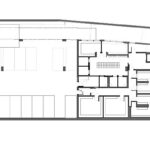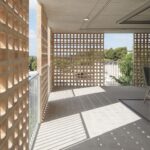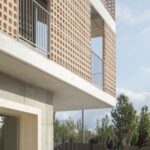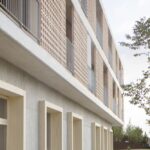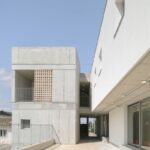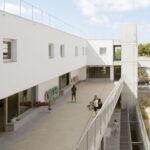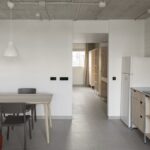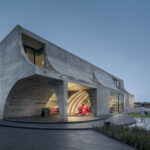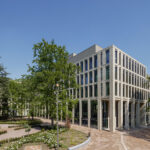Conceptual Genesis
The Esment Inca Building is conceived as a vast container intricately filtering natural light to gradually sculpt interior spaces intimately linked with the exterior. This symbiotic relationship between interior and exterior serves as the cornerstone of the project’s conception.

Enveloping Skin
A paramount objective of the design is to establish a seamless connection between indoor and outdoor spaces. To achieve this, the building is enveloped in a skin that not only fosters spatial connectivity but also blurs the boundaries between the interior and exterior realms.
Architectural Layout
Longitudinally arranged along the site’s longest facade, the building features three above-ground floors and one below-ground level. A deliberate gap between the main structure and the dividing wall accommodates essential communication elements, such as the vehicle ramp and vertical access points.
Functional Zoning
Each floor of the building is meticulously programmed to cater to specific activities while maintaining a strong connection with the surrounding environment. From production spaces and restaurants on the ground floor to private residences on the upper levels, the design promotes community interaction across diverse areas.
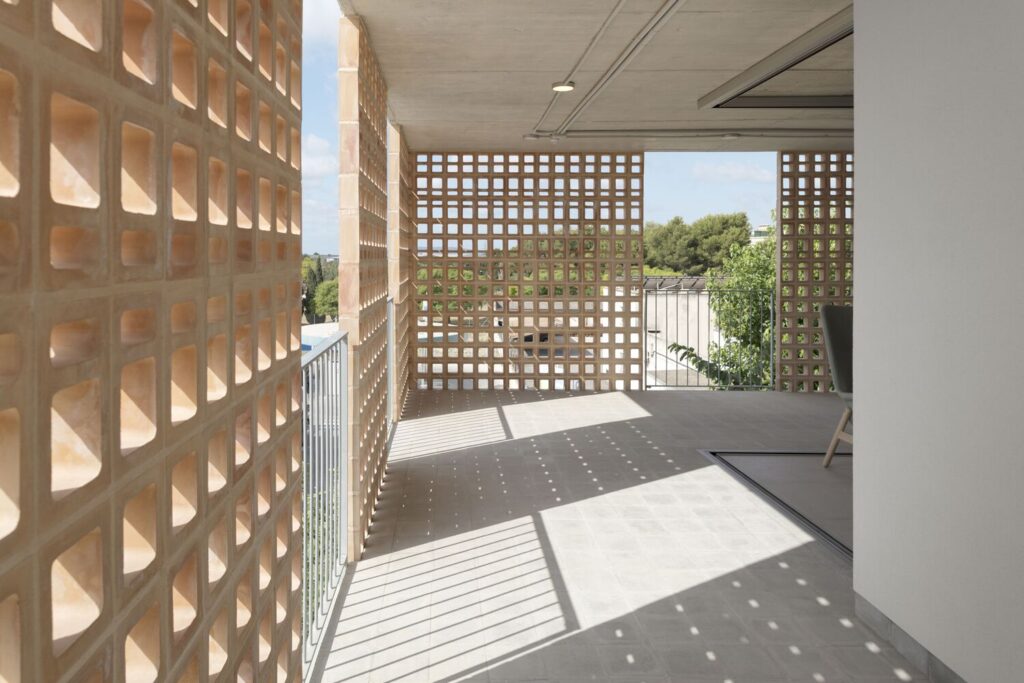
Inclusive Design Philosophy
As the building is owned by the Fundació Amadip Esment, dedicated to individuals with intellectual disabilities, inclusivity is a guiding principle. Spaces are tailored to accommodate users’ needs while fostering integration with the broader community through shared facilities and services.
Sustainable Features
The building incorporates various sustainable features, including a photovoltaic panel installation for self-consumption and a heat recovery system for water heating. Furthermore, the design prioritizes natural ventilation and minimizes air-conditioned spaces, thus reducing the overall carbon footprint.
Materiality and Aesthetic
The architectural expression emphasizes solidity at the ground level, with exposed reinforced concrete, while subsequent floors exude lightness through visible slabs and lattices. Locally sourced materials, such as fired clay from Majorca and Accoya wood, not only enhance aesthetics but also minimize maintenance requirements.
Conclusion: A Harmonious Blend of Form and Function
The Esment Inca Building stands as a testament to the seamless integration of architectural form with functional pragmatism. From its fluid interior-exterior relationship to its sustainable design features, every aspect of the building reflects a meticulous balance between aesthetics, functionality, and inclusivity.

